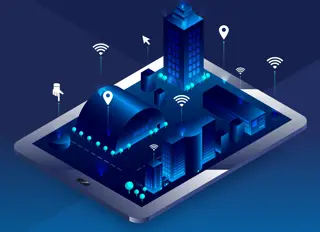Navigating Mid-Range to Luxury Residential Demand: IT Hubs, Innovations, and Inventory Shifts
 The blend of tech innovation and high-end lifestyles has changed the demand for premium housing. This article looks at how IT-focused neighborhoods are driving luxury housing trends, how developers are adapting with cutting-edge design and smart tech, and the new inventory trends in these competitive markets.
The blend of tech innovation and high-end lifestyles has changed the demand for premium housing. This article looks at how IT-focused neighborhoods are driving luxury housing trends, how developers are adapting with cutting-edge design and smart tech, and the new inventory trends in these competitive markets.
Changing Preferences in Luxury Housing
Today's buyers often want to live close to tech hubs and demand exclusive, high-quality living spaces. Key trends driving this change include:
1. Tech-Centric Amenities as Status Symbols
- Smart homes features: Properties with AI-driven automation, IoT-integrated security, and energy-efficient HVAC are seen as basic needs, not just fancy perks.
- EV infrastructure integration: Luxury developments now include dedicated charging stations and solar-powered energy storage systems.
2. Sustainability as a Core Valor Luxury buyers increasingly prefer eco-friendly properties that cut long-term costs and support environmental stewardship:
- Energy-efficient innovations: Solar panels with battery storage and water recycling systems use passive house design principles to achieve net-zero energy use.
- Material traceability: Demand for locally sourced, non-toxic building materials shows a commitment to ethical construction practices.
Developer Responses: Bridging Demand and Supply
Developers use three main strategies to capture premium market share:
- Tech-First Property Design
| Feature | Application in Luxury Homes | Market Impact |
|---|---|---|
| Automated smart systems | Voice-controlled lighting/security | 20–30% price premium in tech mature neighborhoods |
| Energy storage solutions | Solar + battery grid stabilization | Reduced utility dependency |
| EV-ready infrastructure | Private charging stations | Appeal to electric vehicle owners |
- Sustainable Luxury Branding Properties with bold green innovations position themselves as leaders in 'conscious luxury.' Key differentiators include:
- Closed-loop water systems: Rainwater harvesting and greywater recycling reduce municipal dependencies.
- Carbon-negative materials: Reclaimed wood, low-VOC paints, and regenerative concrete show material science advancements.
- Mixed-Use Community Development Developers now include coworking spaces, wellness centers, and cultural amenities within residential complexes to attract remote-working professionals and global executives.
Inventory Growth Patterns and Challenges
Premium inventory in IT hubs face unique challenges:
Supply-Side Dynamics
- Vertical density adoption: Infill projects maximize prime land through multi-story designs with rooftop amenities.
- Pre-sale financing models: Developers partner with institutional investors to prefund sustainable infrastructure upgrades.
Demand-Side Pressures
- Secondary home speculation: Limited inventory in primary IT hotspots drives investment in nearby 'satellite' luxury markets.
- Rental premium markets: Corporate housing demand rises near innovation/IT hubs.
Future Outlook: Integrating Innovation and Experience
Emerging trends will focus on three main areas:
- Seamless technology integration – AI agents managing home maintenance and energy optimization.
- Biophilic design – Living walls, green courtyards, and natural lighting strategies improving well-being.
- Dynamic pricing paradigms – Smart contracts and blockchain tools automating property valuations and transactions.
As luxury markets change, the successful mix of sustainability, technology, and community-focused design will decide competitive advantage at the premium end.